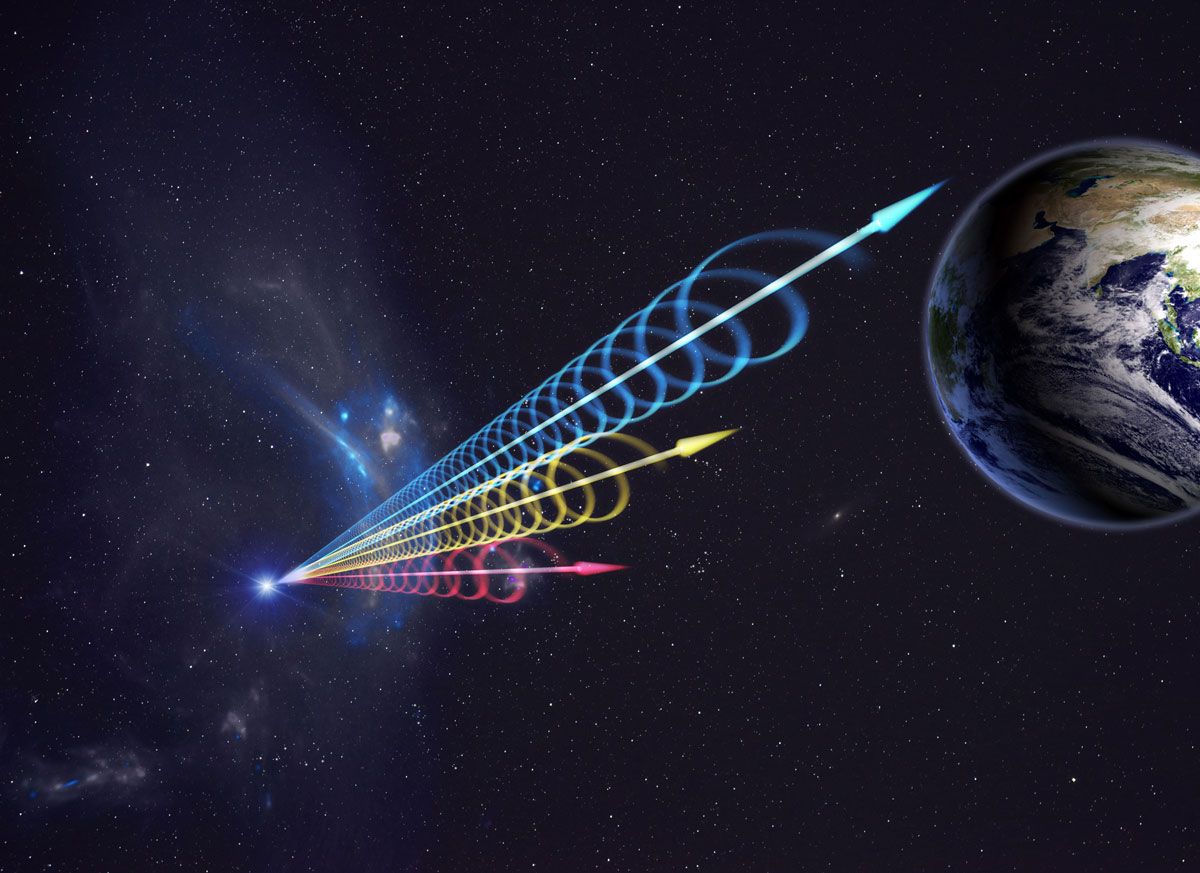
Astronomers have used two of the world's largest radio telescopes to discover the second-known example of a new type of fast radio burst (FRB) — the mysterious, extremely powerful explosions of radio waves that pulse through space thousands of times a day.
The new FRB, called FRB 190520, is strong evidence that multiple celestial objects could be the source of these enigmatic signals.
The new object is the second detected that not only produces repeating FRBs, but that also emits a constant source of weaker radiation in between eruptions. The signal was described in detail in a June 8 paper published in the journal Nature.
First spotted in 2007, fast radio bursts discharge more energy in a few brief milliseconds than the sun does in a year. Astronomers have long puzzled over the source of these sudden bright flashes. But as they predominantly erupt from galaxies millions or even billions of light-years away, and flare quickly and often only once, it is very challenging to identify their sources.
Related: 15 unforgettable images of stars
In 2020, the first ever detection of an FRB within our own galaxy enabled scientists to trace its origins to a magnetar — a highly-magnetized, fast-rotating husk of a dead star. Magnetars are a special type of neutron star, which are ultradense stellar corpses left behind from supernova explosions. Magnetars have unusually strong magnetic fields trillions of times more powerful than that of Earth's. But scientists aren’t sure that all FRBs come from magnetars.
Even stranger, the flashes from some FRBs repeat — sometimes in a single brief burst and other times across multiple sporadic iterations. Of these repeating FRBs, the first and most active is FRB 121102. Located in a dwarf galaxy 3 billion light-years away, the unknown source spits out radio waves from a compact region over a cycle of 157 days; it alternates between 90 days of powerful, repeating radio bursts and 67 days of softer, weaker radio emissions. FRB 121102 is highly active (having been recorded belching out 1,652 flares across a span of 47 days) and for a while astronomers thought it was the only one of its kind, until now.
The researchers caught their first glimpses of the new fast radio burst, FRB 190520, using China's Five-hundred-meter Aperture Spherical radio Telescope (FAST). FAST confirmed that the distant object was emitting frequent and repeating radio bursts, and later observations made with New Mexico's Very Large Array (VLA) pinpointed its location. Scientists found that the repeating bursts’ source, much like its cousin, was situated in a dwarf galaxy roughly 3 billion light-years from Earth. The VLA also confirmed that the source of FRB 190520 was small and compact, and that it was leaking weaker radio emissions in between bigger flashes.
The arrival of a second FRB with similar behavior to the first raises some important questions, and strengthens the possibility that there could be two different types of FRB, the scientists say.
"Are those that repeat different from those that don't? What about the persistent radio emission — is that common?" study co-author Kshitij Aggarwal, an astronomer and graduate student at West Virginia University said in a statement.
The astronomers believe that either two or more completely different mechanisms exist to produce these stunning cosmic flashes, or the bursts are being made by objects at very different stages of their cosmic evolution.
Some indirect evidence supports the second hypothesis. As FRBs often arrive as single pulses from an unknown origin, astronomers usually estimate how far the source is from Earth by measuring how much an FRB's emitted radio waves are separated out by frequency (like light after it has passed through a prism) — something that happens to them the more often they encounter free electrons in space. Called dispersion, the effect offers astronomers a good rough guess of how far a radio flash has travelled before it reaches telescopes on Earth, assuming that electrons are fairly evenly distributed in space.
But being able to trace the location of FRB 190520's source revealed a strange mismatch. The radio waves from the pulsing object were dispersed enough to have come from something 8 billion to 9.5 billion light-years away, but by studying the Doppler shift, or the stretching out of the radio waves’ wavelengths caused by the universe's expansion, the astronomers more accurately placed the object at just under 3 billion light-years from Earth.
"This means that there is a lot of material near the FRB that would confuse any attempt to use it to measure the gas between galaxies," Aggarwal said. "If that's the case with others, then we can't count on using FRBs as cosmic yardsticks."
The unusually dense electron clouds around the FRB could suggest the source is a "newborn" magnetar still cloaked in the material of the supernova explosion that created it. But researchers will need many more measurements before they can be sure.
"The FRB field is moving very fast right now and new discoveries are coming out monthly. However, big questions still remain, and this object is giving us challenging clues about those questions," co-author Sarah Burke-Spolaor, an assistant professor of Astronomy at West Virginia University, said in the statement.
Originally published on Live Science.
"type" - Google News
June 09, 2022 at 10:20PM
https://ift.tt/WqjOYp2
Weird type of fast radio burst discovered 3 billion light-years away - Livescience.com
"type" - Google News
https://ift.tt/UIwoRJ9
https://ift.tt/h0wRMxg
Bagikan Berita Ini














0 Response to "Weird type of fast radio burst discovered 3 billion light-years away - Livescience.com"
Post a Comment